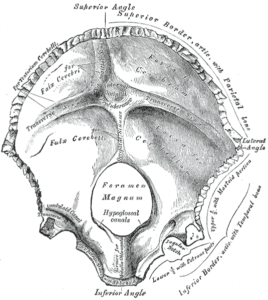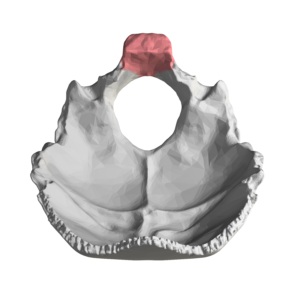
Hello, future healthcare providers! Today, we continue our exploration of the human skull, focusing on a structure of vital importance – the occipital condyles. As we dive deeper into the fascinating architecture of our cranial bones, we will learn how each structure’s intricate design contributes to the overall function of the human body.
The occipital bone, located at the base of the skull, is divided into four sections: the squamous part, two occipital condyles, and the basilar part. Today’s topic will center on the occipital condyles, their anatomy, functions, and clinical relevance.
Anatomy
The occipital condyles are two oval-shaped processes found on either side of the foramen magnum, the largest opening in the base of the skull. These projections articulate with the superior facets of the first cervical vertebra (atlas), forming the atlanto-occipital joint, which allows the head to nod ‘yes’.
Structure
Each condyle is convex in shape, pointing forwards and laterally. Each is composed of an anterior quadrilateral and a posterior circular part. The hypoglossal canal, a crucial structure, traverses each occipital condyle. It permits the passage of the hypoglossal nerve (cranial nerve XII), responsible for movements of the tongue.
Function
The primary role of the occipital condyles is to facilitate movement between the skull and the vertebral column. By articulating with the atlas, they allow for nodding movements (flexion and extension) at the atlanto-occipital joint. This anatomical feature is crucial for functions such as nodding in agreement or looking up at the sky.
Furthermore, the hypoglossal canals in the occipital condyles allow the passage of the hypoglossal nerve, thus facilitating tongue movements.
Clinical Relevance
Understanding the anatomy and function of the occipital condyles is crucial for various clinical scenarios:
- Head and Neck Trauma: Trauma to the head and neck can lead to fractures of the occipital condyles. These injuries can be critical given the close proximity to the brainstem and cranial nerves.
- Radiological Imaging: Knowledge of the occipital condyles and surrounding structures is important when interpreting imaging studies, such as CT and MRI scans. This can assist in identifying any pathological conditions or trauma.
- Surgical Procedures: Procedures involving the base of the skull, such as posterior fossa surgery, may require careful navigation around the occipital condyles.
Conclusion
The occipital condyles, while small, play a significant role in the movements of the head and house important neurovascular structures. As such, a clear understanding of their anatomy, function, and potential pathologies is crucial for any medical professional.
Remember, it’s not just about memorizing structures. Rather, the aim is to integrate this knowledge and apply it to clinical scenarios. This helps create a well-rounded understanding of these complex structures and their significance in clinical practice. As you delve deeper into your studies, you’ll see how every piece of this intricate anatomical puzzle fits together to create the remarkable human body.


